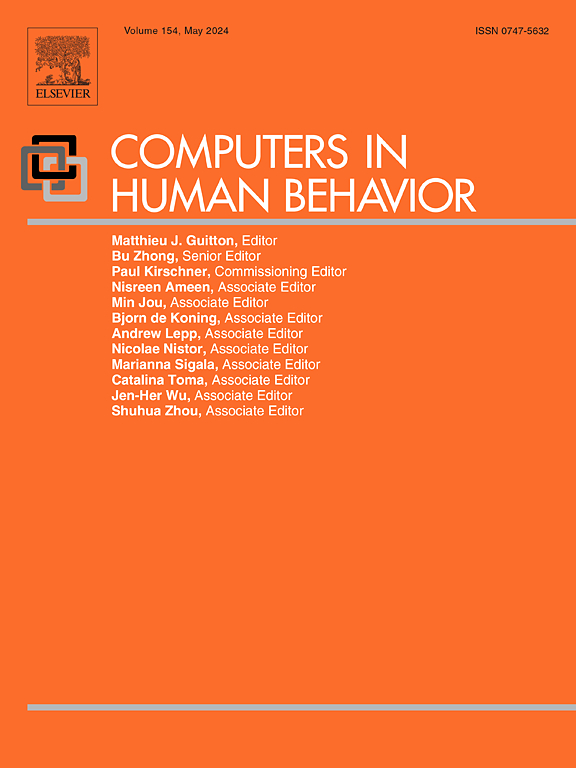Facial emotion recognition from feature loss media: Human versus machine learning algorithms
IF 8.9
1区 心理学
Q1 PSYCHOLOGY, EXPERIMENTAL
引用次数: 0
Abstract
The automatic identification of human emotion, from low-resolution cameras is important for remote monitoring, interactive software, pro-active marketing, and dynamic customer experience management. Even though facial identification and emotion classification are active fields of research, no studies, to the best of our knowledge, have compared the performance of humans and Machine Learning Algorithms (MLAs) when classifying facial emotions from media suffering from systematic feature loss. In this study, we used singular value decomposition to systematically reduce the number of features contained within facial emotion images. Human participants were then asked to identify the facial emotion contained within the onscreen images, where image granularity was varied in a stepwise manner (from low to high). By clicking a button, participants added feature vectors until they were confident that they could categorise the emotion. The results of the human performance trials were compared against those of a Convolutional Neural Network (CNN), which classified facial emotions from the same media images. Findings showed that human participants were able to cope with significantly greater levels of granularity, achieving 85 % accuracy with only three singular image vectors. Humans were also more rapid when classifying happy faces. CNNs are as accurate as humans when given mid- and high-resolution images; with 80 % accuracy at twelve singular image vectors or above. The authors believe that this comparison concerning the differences and limitations of human and MLAs is critical to (i) the effective use of CNN with lower-resolution video, and (ii) the development of useable facial recognition heuristics.
基于特征损失媒介的面部情感识别:人类与机器学习算法
从低分辨率摄像机中自动识别人类情感对于远程监控、交互式软件、主动营销和动态客户体验管理非常重要。尽管面部识别和情绪分类是活跃的研究领域,但据我们所知,还没有研究比较过人类和机器学习算法(MLAs)在从遭受系统特征丢失的媒体中对面部情绪进行分类时的表现。在这项研究中,我们使用奇异值分解来系统地减少面部情绪图像中包含的特征数量。然后要求人类参与者识别屏幕上图像中包含的面部情绪,其中图像粒度以循序渐进的方式变化(从低到高)。通过点击按钮,参与者添加特征向量,直到他们确信自己可以对情绪进行分类。人类表现试验的结果与卷积神经网络(CNN)的结果进行了比较,卷积神经网络从相同的媒体图像中分类面部情绪。研究结果表明,人类参与者能够处理更大的粒度水平,仅用三个单一图像向量就达到了85%的准确率。人类对快乐面孔进行分类的速度也更快。当给定中分辨率和高分辨率图像时,cnn和人类一样准确;在12个或以上的单一图像向量上具有80%的精度。作者认为,这种关于人类和mla的差异和局限性的比较对于(i)在低分辨率视频中有效使用CNN,以及(ii)开发可用的面部识别启发式至关重要。
本文章由计算机程序翻译,如有差异,请以英文原文为准。
求助全文
约1分钟内获得全文
求助全文
来源期刊

Computers in Human Behavior
Multiple-
CiteScore
19.10
自引率
4.00%
发文量
381
审稿时长
40 days
期刊介绍:
Computers in Human Behavior is a scholarly journal that explores the psychological aspects of computer use. It covers original theoretical works, research reports, literature reviews, and software and book reviews. The journal examines both the use of computers in psychology, psychiatry, and related fields, and the psychological impact of computer use on individuals, groups, and society. Articles discuss topics such as professional practice, training, research, human development, learning, cognition, personality, and social interactions. It focuses on human interactions with computers, considering the computer as a medium through which human behaviors are shaped and expressed. Professionals interested in the psychological aspects of computer use will find this journal valuable, even with limited knowledge of computers.
 求助内容:
求助内容: 应助结果提醒方式:
应助结果提醒方式:


